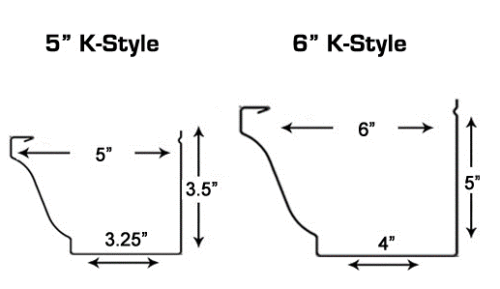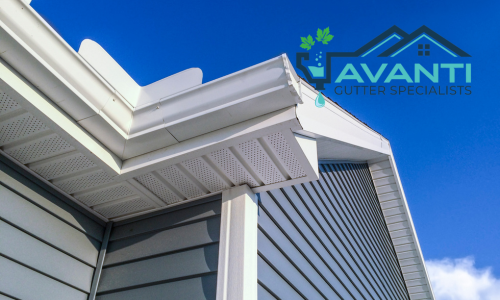Gutters play a crucial role in protecting our homes from water damage by channeling rainwater away from the roof and foundation. However, improper installation can lead to a host of problems, from leaks and water damage to structural issues. In this blog post, we’ll delve into the world of gutter installation, highlighting common mistakes that homeowners and contractors often make, and how to avoid them.
Drawing upon the expertise of seasoned professionals in the field, we’ll explore key insights and best practices for ensuring a successful gutter installation project. Whether you’re a homeowner considering a DIY approach or a contractor seeking to improve your skills, this guide aims to provide valuable knowledge and practical tips to help you achieve optimal results.
From choosing the right materials and sizing your gutters correctly to proper placement and maintenance, we’ll cover essential aspects of gutter installation to help you safeguard your home against water-related woes. So, let’s dive in and discover how to avoid common pitfalls and achieve a seamless gutter installation that stands the test of time.
The Role of Proper Sizing in Gutter Installation
When it comes to installing gutters, one of the most critical factors to consider is proper sizing. While it may seem straightforward, selecting the right size gutters for your home involves more than just aesthetics. Properly sized gutters play a crucial role in effectively managing rainwater runoff, preventing water damage to your home’s foundation, landscaping, and exterior surfaces. In this comprehensive guide, we’ll explore the importance of proper sizing in gutter installation and provide expert insights to help you make informed decisions for your project.

Understanding the Importance of Sizing
Properly sized gutters are essential for efficiently channeling rainwater away from your home. Gutters that are too small may overflow during heavy rain, leading to water pooling around the foundation and potential structural damage. Conversely, oversized gutters may not adequately drain water during light rainfall, increasing the risk of water infiltration and moisture-related issues. By selecting the appropriate gutter size, you can ensure optimal performance and protect your home from water damage.
Factors Influencing Gutter Size
Several factors influence the selection of gutter size, including roof area, roof pitch, rainfall intensity, and local building codes. A larger roof area or steeper roof pitch will require larger gutters to accommodate the increased volume of water runoff. Similarly, areas with heavy rainfall may necessitate larger gutter sizes to handle the influx of water effectively. It’s essential to consider these factors when determining the appropriate gutter size for your home.
Calculating Gutter Capacity
The capacity of gutters is typically measured in terms of gallons per minute (GPM) or inches of rainfall per hour. To calculate the required gutter capacity for your home, you’ll need to consider the roof area, rainfall intensity, and the number of downspouts. Online calculators and formulas provided by gutter manufacturers can help you determine the optimal gutter size based on these variables.
Consulting Building Codes and Regulations
Local building codes and regulations may dictate minimum requirements for gutter size and capacity in your area. It’s essential to consult these guidelines to ensure compliance and avoid potential issues during inspection or resale. Building codes are designed to uphold safety standards and protect properties from water damage, so adhering to these regulations is crucial for a successful gutter installation.
Seeking Professional Advice
While it’s possible to estimate gutter size using online calculators and guidelines, seeking professional advice from experienced gutter installers is highly recommended. A professional contractor can assess your home’s specific requirements, taking into account factors such as roof pitch, landscaping, and architectural features. Their expertise will ensure that your gutter system is properly sized and installed for maximum effectiveness.
Understanding Downspout Placement for Effective Water Disposal
Downspouts play a crucial role in directing rainwater away from your home’s foundation and landscaping, helping to prevent water damage and erosion. However, determining the optimal placement of downspouts requires careful consideration of several factors, including roof pitch, landscape slope, and local building codes. In this comprehensive guide, we’ll explore expert insights on downspout placement to ensure effective water disposal and safeguard your property.
- Assessing Roof Pitch and Area: Before determining downspout placement, it’s essential to assess the pitch and area of your roof. Steeper roofs tend to shed water more quickly, requiring strategically placed downspouts to manage runoff effectively. Additionally, the size and configuration of your roof will influence the number and placement of downspouts needed to handle rainfall efficiently.
- Understanding Landscape Slope: The slope of your landscape plays a significant role in directing water away from your home’s foundation. Ideally, downspouts should discharge water onto a slope that naturally carries it away from the building. Avoid placing downspouts near areas of flat terrain where water can pool, leading to potential flooding and erosion issues.
- Determining Downspout Quantity: The number of downspouts required depends on factors such as roof size, rainfall intensity, and local building codes. As a general rule, larger roofs and areas with high rainfall should have more downspouts to handle increased water volume effectively. Consulting with a professional or referring to building regulations can help determine the appropriate number of downspouts for your property.
- Strategic Placement Considerations: When placing downspouts, consider the layout of your property and any potential obstacles that may impede water flow. Downspouts should be positioned away from walkways, driveways, and landscaping features to prevent water damage and erosion. Additionally, ensure that downspouts extend a sufficient distance from the foundation to direct water away from the building’s structure.
- Addressing Building Codes and Regulations: Local building codes may dictate specific requirements for downspout placement, including minimum distances from property lines, neighboring structures, and public sidewalks. It’s essential to familiarize yourself with these regulations to ensure compliance and avoid potential fines or penalties.

Choosing the Right Materials for Durable Gutter Systems
When it comes to gutter installation, one of the most crucial decisions you’ll make is selecting the right materials. The choice of materials can significantly impact the durability, performance, and maintenance requirements of your gutter system. In this comprehensive guide, we’ll explore the various options available and provide expert insights to help you make an informed decision.
Aluminum Gutters
Aluminum is one of the most popular choices for gutter systems due to its lightweight nature, affordability, and resistance to corrosion. It is available in a wide range of colors and styles, making it suitable for various architectural designs. However, aluminum gutters may dent easily and require regular maintenance to prevent oxidation and ensure longevity.
Vinyl Gutters
Vinyl gutters are another cost-effective option that is lightweight, easy to install, and resistant to rust and corrosion. They are available in pre-cut sections, making them ideal for DIY installation projects. However, vinyl gutters may become brittle over time, especially in extreme weather conditions, and may not be as durable as other materials.
Steel Gutters
Steel gutters, typically made of galvanized or stainless steel, offer exceptional strength and durability, making them suitable for areas with harsh weather conditions. They are less prone to denting compared to aluminum gutters and can withstand heavy snow loads. However, steel gutters are susceptible to rust and may require regular maintenance and protective coatings to prevent corrosion.
Copper Gutters
Copper gutters are known for their aesthetic appeal and longevity, as copper does not rust or corrode. Over time, copper develops a natural patina that adds character and charm to your home’s exterior. While copper gutters are more expensive than other materials, they offer superior durability and require minimal maintenance, making them a long-term investment.
Zinc Gutters
Zinc gutters are gaining popularity for their durability, eco-friendliness, and low maintenance requirements. Similar to copper, zinc develops a protective patina over time, enhancing its resistance to corrosion and weathering. While initially more expensive than other materials, zinc gutters offer excellent longevity and require little to no maintenance over their lifespan.
Conclusion
Avanti Gutters LLC, based in Venice, FL, United States, we are committed to providing expert insights to help clients avoid common mistakes in gutter installation. With our dedication to quality service and attention to detail, we strive to ensure that each installation meets the highest standards of excellence. By offering guidance and utilizing our expertise, we empower customers to make informed decisions, ultimately enhancing the functionality and longevity of their gutter systems. Contact us today at +19415991811 to benefit from our professional services and avoid unnecessary installation pitfalls.

